Bartram's Garden on the Schuykill


”The botanick fire had set in me such a flame as is not to be quenched untill death”. That’s certainly a confession no true plant addict would ever fail to understand. Born in 1699 into a Quaker family in colonial Pennsylvania, John Bartram was to become one of America’s first botanists and one of its most renowned. With little formal training and largely self-taught, he spent his childhood in Philadelphia, then barely only a few decades old, immersed in books and local wildlife. He continued his passion for nature by growing plants he found interesting on a hundred acres purchased on the Schuykill River in Kingsessing, just three miles south of Philadelphia. The botanical plantings started in 1728 and eventually covered about eight acres. They are now the oldest botanical garden and arboretum in the United States with treasures such as a ginkgo and yellowwood both dating to the 1790s. Bartram’s farmhouse was built between 1728-1733 with a Palladian-style stone facade quarried on the property and carved with his own hands. A greenhouse erected in 1760, originally warmed by the stove invented by Benjamin Franklin, survives as well.





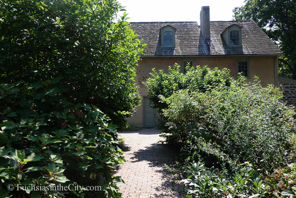

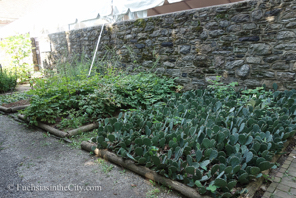




Left, wild red zinnia, Zinnia pauciflora; Right, the balsam pear, Mormordica charantia.
Recreation of the original vine-covered arbor where Bartram often entertained guests, including George Washington, Alexander Hamilton and Benjamin Franklin. An American wisteria, Wisteria fructescens, appropriately scrambles over the rustic feature.



Franklinia alatamaha was discovered by John and William Bartram growing only in a very small area near Fort Barrington along the banks of the Altamaha River in Georgia in 1765. William Bartram named it after Benjamin Franklin. It was last seem growing in the wild in 1803 and is unfortunately presumed to be extinct outside of cultivation.


Right, an unspecified hornbeam species with its showy pendant bracts of fruit. Looks to me to be the American hornbeam, Carpinus caroliniana, also sometimes known as blue beech, ironwood or musclewood.
The oldest Ginkgo biloba in America grows here at Bartram’s Garden. Seeds of this Chinese plant came by way of London to William Hamilton, who owned a neighboring estate called the Woodlands. Hamilton established two trees for himself and gave this male tree to William Bartram in 1795. Unfortunately, neither the Woodlands nor its two ginkgos, nor William Hamilton presumably, have survived.

Left, a magnificent American beech, Fagus grandiflora, towers far overhead.
This venerable yellowwood, Cladrastis kentukea, is one of oldest trees at Bartram’s Garden. It was grown from seed collected in Kentucky or Tennessee by the French botanist and explorer, André Michaux, which he sent to the Bartrams sometime after 1790. A rare member of the pea family with a restricted range in the wild, the yellowwood puts on a fragrant display of white wisteria-like blossoms in early summer. It’s also highly tolerant of urban conditions.



Top left and lower right, Sarracenia leucophylla, the carnivorous crimson pitcher plant, is popular with collectors and many beautiful selections and crosses with other members of the genus are have been made. Bartram also introduced the Venus flytrap, Dionaea muscipula, into popular cultivation.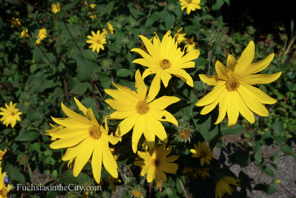





Top left, rosinweed or Silphium; Top right, scarlet rosemallow, Hibiscus coccineus; Middle left, Phlox paniculata, or garden phlox, now a widely cultivated ornamental as its common name attests; Middle right, Viburnum berries start to ripen in the sun; Bottom left, not a couple of pears… but the bottlebrush buckeye, Aesculus parviflora; Bottom right, Callicarpa americana, or the American beautyberry, will develop, clusters of brilliant violet to magenta fruit in the leaf axils in September and October.
Halberd-leaved rosemallow, Hibiscus laevus.

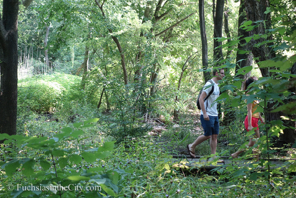


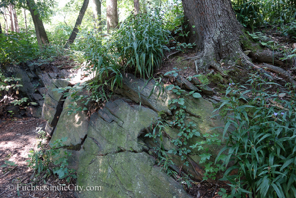
Top left, Heuchera americana, or alumroot, has been used to produce a wide range of showy-leaved plants for the garden; Middle right, pokeweed, Phytolacca americana, is beautiful but toxic to humans and livestock. Young leaves and shoots are sometimes eaten after repeated blanchings and cooked berries used in jams and pies. Go figure. Don't think I'm ready for pokeweed jam on my toast, though; Bottom right, the cardinal flower, Lobelia cardinalis.
The distinctive leaves of the red mulberry, Morus rubra, can appear unlobed, mitten-shaped, and with two to three lobes all on a single tree. Unfortunately the red mulberry is threatened by hybridization with the invasive white mulberry, Morus alba, introduced from Asia.

Above right, the all-too-common poison ivy, Taxicodendron radicans, was hopefully never a surprise found in any "Bartram's Box". 
Peltrandra virginica, or arrow arum, growing in the mud at the river’s edge. Carefully framed, the idyllic scene is deceiving if you look closely at the distant bank. Some views below are more revealing. Though, Philadelphia seen across the meadow has a charm of its own.

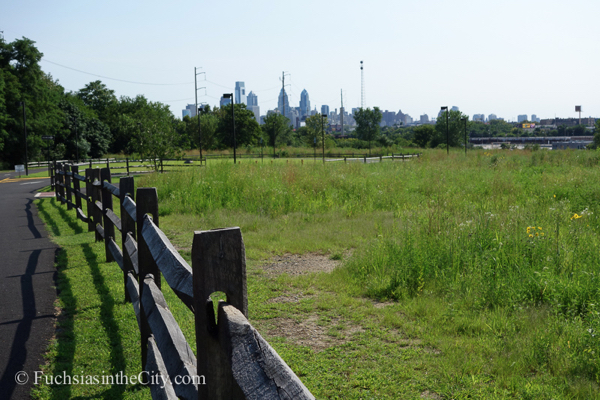
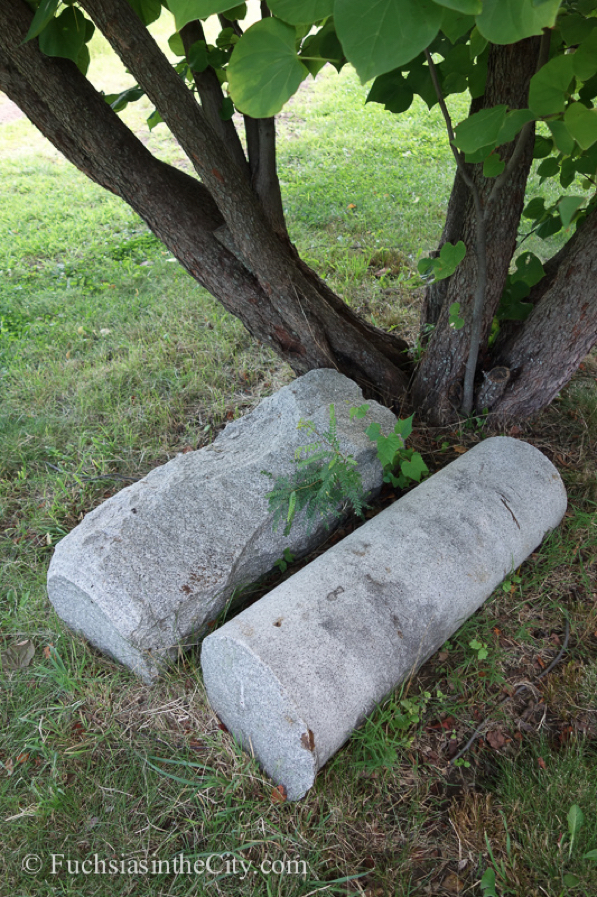
Fallen columns at the feet of an Eastern redbud, Cercis canadensis. Its pale to bright magenta flowers are carried along the bare branches and light up the forest understory in late spring.


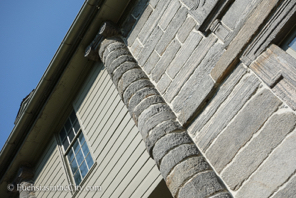
br>